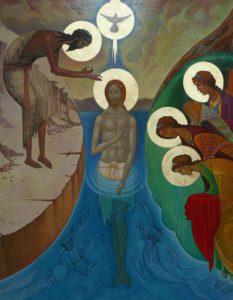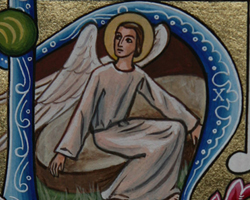Architecture with Arts for Liturgy
Liturgiam artibus provehens Architectura
Series editor
Daniel P. McCarthy OSB

courtesy of Ealing Abbey
The liturgy was renewed in specific ways at the mandate of the Second Vatican Council, but the mandate regarding the art and architecture for the celebration of the renewed liturgy was of a more general character. Developing the artistic programme and architectural design of a church to support the renewed liturgy is an organic process. A systemic, unitary, comprehensive vision is needed as of an organism in all its parts and structures. Many renewal programs have focused on one or two specific elements of church art or architecture without integrating the complex whole, whereas lasting renewal inspires by its synthesis and comprehensiveness.
The voice of liturgical scholars has often been missing in the conversation on how to arrange a church for the celebration of liturgy, and the presentation of scholarly research by liturgists has been lacking. In response, the initiative Liturgiam artibus provehens architectura : Architecture and arts for Liturgy was developed as part of the project Liturgiam aestimare : Appreciating Liturgy and in collaboration with the Pontifical Liturgy Institute, Rome, in order to promote ongoing discussion, teaching and publishing in the interdisciplinary field of liturgical art and architecture for the celebration of liturgy.
Celebrating liturgy involves bodily actions that narrate the mysteries celebrated. Not only does bodily narration determine the functional aspects of church design, but even more importantly the inner dimensions inherent in the ritual narrative are expressed outwardly through an artistic program well integrated into the architectural design and arrangement of churches.

courtesy of Farnborough Abbey
Much attention is given to the design of functional and even transcendent buildings, but insufficient attention has been given to the prolonged ritual narration whose every element expresses in synthesis the whole mystery celebrated by rites, symbols and texts proper to each element, all of which is determinative of the design and arrangement of church buildings and their artistic programs.
To this end a series of publications is envisioned and a series of Liturgy weeks Architecture for Liturgy to be held in Rome and aborad. These publications, teaching and conversations are intended to support: church officials who govern the building and renovating of churches and developing their artistic programmes; professional artists and architects wishing to design buildings and works of art that support a fuller ritual narrative and better express outwardly elements inherent in the ritual celebration: parishes wishing to renew their liturgical celebrations by supporting a more fully developed ritual narrative through a more fully developed architectural and artistic environment.
Research libraries and seminaries will have an invaluable tool, and bishops will find in this series the resources needed to fulfil their ministry of directing the future course of liturgical renewal.